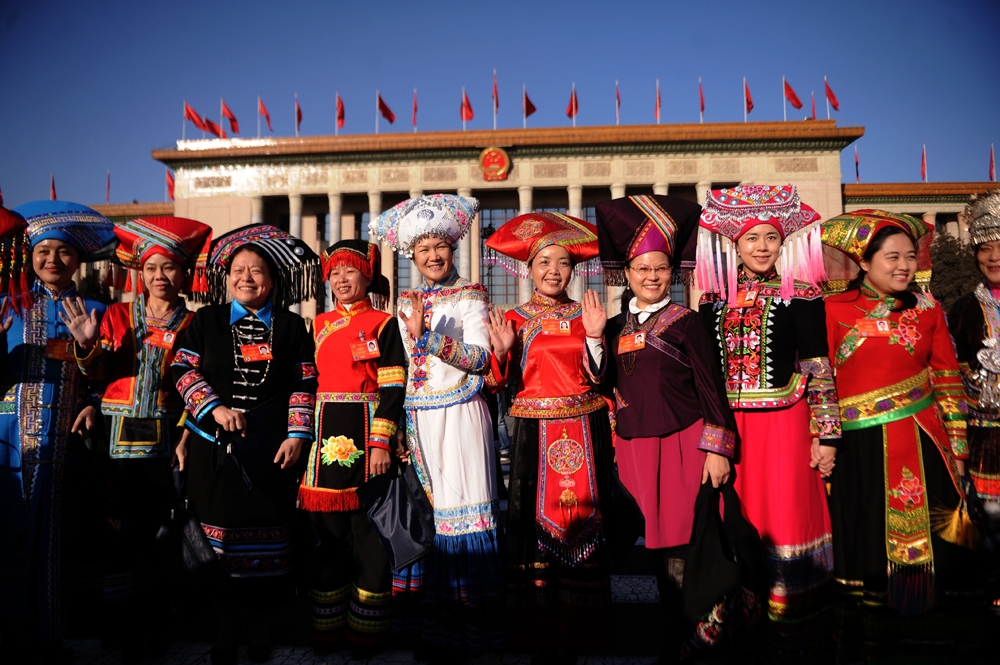
There are 55 ethnic minorities in China, which are widely distributed in various regions of China, but mainly concentrated in provinces and autonomous regions such as the southwest, northwest and northeast. The following is a detailed introduction to the distribution and customs of China’s ethnic minorities:
I. Distribution of ethnic minorities
China’s ethnic minorities are mainly distributed in the following regions:
Southwest region: including Yunnan, Guizhou, Sichuan, Chongqing, Tibet and other provinces. These regions have complex terrain and diverse climate, which provide conditions for the survival and reproduction of different ethnic groups. Among them, Yunnan Province has the richest ethnic composition and is the province with the most ethnic minorities in the country.
Northwest region: including Xinjiang, Qinghai, Gansu, Ningxia, Shaanxi and other provinces. These areas are dry and rainless, but have rich natural resources and unique geographical environment, which attracts many ethnic minorities to settle here.
Northeast region: including Liaoning, Jilin, Heilongjiang and other provinces. Although the number of ethnic minorities in the northeast is relatively small, there are also some ethnic groups with distinctive characteristics living here, such as Manchu and Korean.
In addition, autonomous regions such as Inner Mongolia and Guangxi are also important areas where ethnic minorities live.
II. Customs of ethnic minorities
Due to the large number of ethnic minorities in China, each ethnic group has its own unique cultural customs. The following are some representative ethnic minorities and their customs:
Tibetan
Clothing: Tibetan clothing has strong ethnic characteristics. Men mostly wear Tibetan robes, while women like to wear various accessories, such as earrings, necklaces, bracelets, etc.
Diet: Tibetans mainly eat tsampa, butter tea, beef and mutton, and also like to drink highland barley wine.
Festivals: Tibetan traditional festivals include Tibetan New Year and Shoton Festival, among which Tibetan New Year is one of the most important festivals for Tibetan people.
Taboo: Tibetans are taboo to eat donkey meat, horse meat and dog meat, and they are also not allowed to cut down trees or make loud noises near temples.
Mongolian
Clothing: The traditional clothing of Mongolians is long robes and belts. Men mostly wear hats, while women like to wear various headdresses.
Diet: Mongolians mainly eat beef, mutton and dairy products, and also like to drink kumis and milk tea.
Festivals: Mongolian traditional festivals include Nadam Festival and Horse Year Festival, among which Nadam Festival is a grand gathering of Mongolian people.
Customs: Mongolian people are hospitable and like to entertain guests with songs, dances and fine wine.
Uyghur
Clothing: Uyghur men mostly wear long robes and trousers, while women like to wear colorful dresses and headscarves.
Food: Uyghurs mainly eat noodles and beef and mutton, and also like to drink milk tea and eat various dried fruits.
Festivals: Uyghur traditional festivals include Rouzi Festival and Eid al-Adha, which are important festivals of Islam.
Customs: Uyghur people are good at singing and dancing, and like to express their emotions and blessings through singing and dancing.
Zhuang
Clothing: Zhuang men mostly wear double-breasted tops and trousers, while women like to wear colorful shorts and long skirts.
Food: Zhuang people mainly eat rice and corn, and also like to eat various pickled foods and sour foods.
Festivals: Zhuang traditional festivals include March 3rd Song Festival, etc. These festivals are important moments for Zhuang people to celebrate the harvest and pray for happiness.
Customs: The Zhuang people are hospitable and like to entertain guests with wine and songs.
Miao
Clothing: Miao clothing features silver ornaments and embroidery. Women often wear silver ornaments and clothes embroidered with exquisite patterns.
Diet: The Miao people mainly eat rice and corn, and also like to eat various sour and pickled foods.
Festivals: The traditional festivals of the Miao people include the Miao New Year Festival and the Sisters Festival. These festivals are important moments for the Miao people to celebrate the harvest and pray for happiness.
Customs: The Miao people are good at singing, dancing and embroidery skills, and they also have many unique folk beliefs and taboos.
